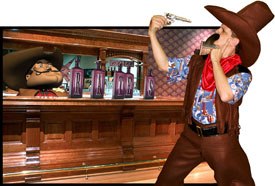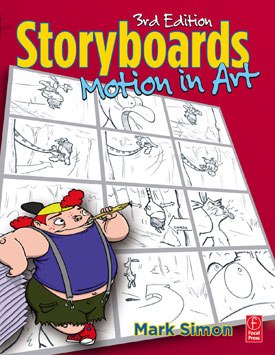Mark Simon returns in this month's "Mind Your Business" as the "quick on the draw" deputy of Freelance, Texas, answering the age old question -- "how much should I charge for my services?"

Howdy friend. Welcome to the Wild West of working in Freelance, Texas. To make the most of your time here, you need to tame the bucking bronco of rates.
The first question we hear in the town of Freelance is, "How much should I charge for my services?"
Before you shoot yourself in the face and draw the first number that comes into your mind, do a little research. There are a few places here in town where you can find more information.
If you mosey on over to the local book tavern, you will find a great resource for artists, the Graphic Artist Guild Handbook of Pricing & Ethical Guidelines. This pricing bible outlines not only a range of rates for many fields of art and animation, but it also details trade practices and contains sample contracts.
So how do you know if you should lasso the top or the bottom of the range of rates? It's quite easy. If you are in a large city with lots of experience, you can charge near the top of the scale. If you are in a small city, rates tend to be lower. The less experience you have in your field, the lower your rate will start.
Another source of rates can be your competitors. Many artists are more than happy to help others with the going rates. While this may seem unusual, it actually makes sense. Artists want their competition to charge realistic rates and not undercharge for projects. People who undercharge give clients expectations of paying low rates. That affects everyone negatively.

There is another great reason for making sure you don't underbid on a project. As a cowpoke, I interviewed to be the storyboard artist on the Jim Carey movie, Ace Ventura. The interview was going great until they asked the question, "What's your rate?"
Like most people do when they really want a job, I offered them a low rate thinking it would cement the deal, "I'll do it for $1,000 a week."
Their immediate response was "Oooh, that's too bad. We thought you had more experience than that." I didn't get the gig because I underbid and it made me look like I couldn't do the job. That's a mistake I have not repeated.
You can also ask the person offering you the freelance gig the rate they have in their budget. They may not always answer, but you can often get an idea from them. When a producer or production manager does tell you what they have in their budget, the amount is always less than they really have. They always leave room to negotiate and they hope you will accept the lower rate and give them a pad (extra money to pay for something else) in their budget.
As a part of your job research, call other people in the industry and ask them about the local range of rates. Producers, associate producers, production managers, production coordinators, production accountants, creative directors and art buyers can tell you how much gold to mine for each job position.
As you ask people about rates, keep in mind that freelance rates are always higher than rates for staff or salaried people. Usually, the rates are quite a bit higher. There is a very good reason for this.
Salaried people have a steady, guaranteed income and get many benefits from most companies they work for, freelancers don't. For instance, staffers often get medical insurance, retirement plans, paid vacation time and half of their social security tax is paid by the employer. Freelance rates must be high enough to cover these expenses, as well as pay for their own business expenses such as supplies, office space, marketing and more.
Freelancers also have to account for down days or non-billable time. (Those are nice ways to say out-of-work) While a rate of $2,000 per week sounds great, if you have a gig that lasts two weeks and it takes another two weeks to land and start the next gig, the freelancer's average rate drops to only $1,000 per week ($4,000 income divided by four weeks).
So saddle up with some research, put on them spurs and lasso yourself some great freelance rates.
Mark Simon an award-winning animation producer, storyboard artist and lecturer who is also the author of books for artists such as Facial Expressions: A Visual Reference for Artists, Producing Independent 2D Character Animation, the new Storyboards: Motion In Art and Your Résumé Sucks! His books may be found and purchased online along with custom résumés and free industry forms and podcasts at www.YourResumeSucks.biz. He may be reached at MarkSimonBooks@yahoo.com.







